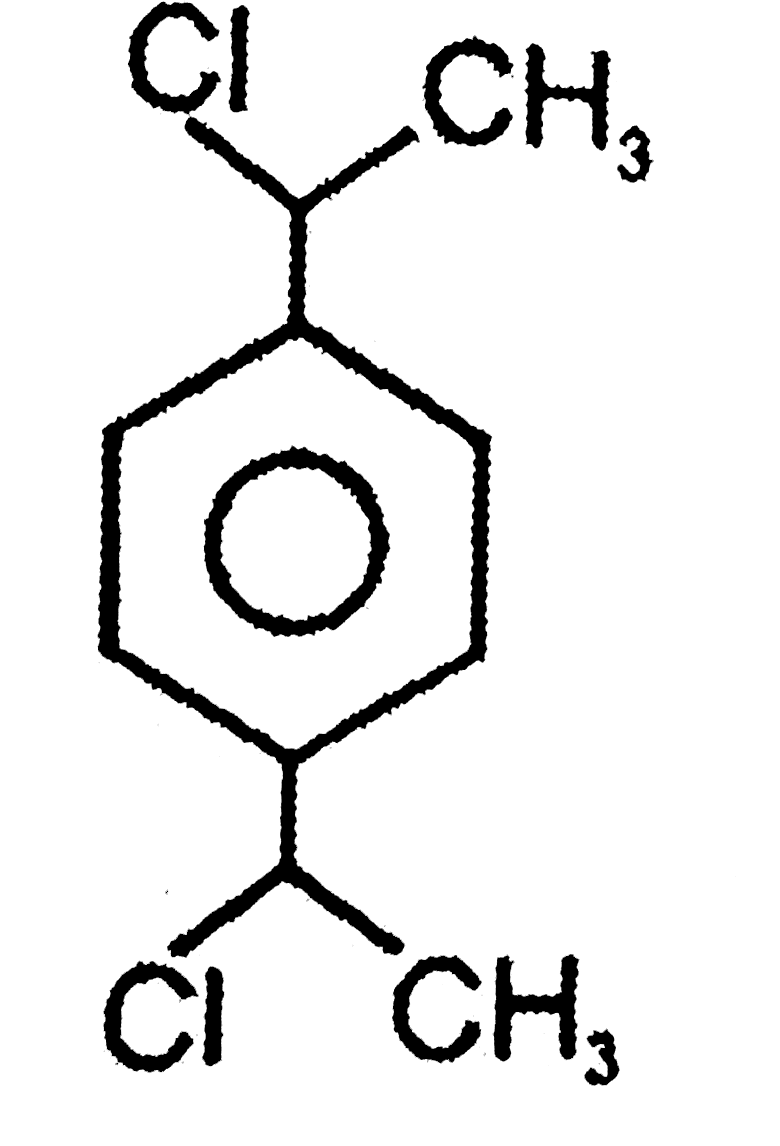Total acyclic optically active isomers of C3H2D2 are :
0
1
2
4
The correct Answer is:A
To determine the total acyclic optically active isomers of the compound C3H2D2, we will follow these steps:
Step 1: Identify the possible structures
The molecular formula C3H2D2 indicates that we have three carbon atoms, two hydrogen atoms, and two deuterium atoms. Since we are looking for acyclic (open-chain) structures, we can consider the following arrangements:
1. Structure 1: A straight-chain with a double bond:
- H2C=CH−CH2D
- This structure can also be represented as H2C=CH−CHD2.
2. Structure 2: Another arrangement with a double bond:
- H2C=CHD−CH2D
- This structure can also be represented as H2C=CHD2−CHD.
Step 2: Analyze the structures for optical activity
Next, we need to analyze these structures to determine if they are optically active or inactive.
- Structure 1: H2C=CH−CH2D
- This structure has a plane of symmetry, making it optically inactive.
- Structure 2: H2C=CHD−CH2D
- This structure does not have a plane of symmetry, making it optically active.
Step 3: Count the optically active isomers
From our analysis:
- We found one optically active structure (Structure 2).
- The other structure (Structure 1) is optically inactive.
Conclusion
Therefore, the total number of acyclic optically active isomers of C3H2D2 is 1.
Final Answer
The total acyclic optically active isomers of C3H2D2 are: 1.
The molecular formula C3H2D2 indicates that we have three carbon atoms, two hydrogen atoms, and two deuterium atoms. Since we are looking for acyclic (open-chain) structures, we can consider the following arrangements:
- H2C=CH−CH2D
- This structure can also be represented as H2C=CH−CHD2.
- H2C=CHD−CH2D
- This structure can also be represented as H2C=CHD2−CHD.
Next, we need to analyze these structures to determine if they are optically active or inactive.
- This structure has a plane of symmetry, making it optically inactive.
- This structure does not have a plane of symmetry, making it optically active.
From our analysis:
- We found one optically active structure (Structure 2).
- The other structure (Structure 1) is optically inactive.
Therefore, the total number of acyclic optically active isomers of C3H2D2 is 1.
The total acyclic optically active isomers of C3H2D2 are: 1.
Topper's Solved these Questions
- BASIC CONCEPTSBook:RESONANCE ENGLISHChapter:BASIC CONCEPTSExercise:Inorganic chemistry (Periodic Table & Periodicity
Explore 27 Videos
- BASIC CONCEPTSBook:RESONANCE ENGLISHChapter:BASIC CONCEPTSExercise:ORGANIC CHEMISTRY(BASIC CONCEPTS)
Explore 27 Videos
- AROMATIC COMPOUNDSBook:RESONANCE ENGLISHChapter:AROMATIC COMPOUNDSExercise:Part - III Practice Test-22
Explore 1 Video
- BIOMOLECULESBook:RESONANCE ENGLISHChapter:BIOMOLECULESExercise:Advanced Level(Part II)
Explore 33 Videos
Similar Questions
(W) and (X) are optically active isomers of C5H9Cl (W) on treatment with 1mol of H2 is converted to an optically inactive compound (Y), but (X) gives an optically actgive compound (Z) under the same conditions. Give the sturcture of (Y) and the configurations of (W),(X) and (Z) in Fischer projections.
View SolutionTotal number of optically active stereoisomers of CH3−C∣CIH−CH2−CH2−C∣CIH−CH3 are :
View SolutionTotal number of isomers of C4H9Cl are
View SolutionHow many meso isomers of C4H8Cl2 will be?
View SolutionThe number of optically active compounds in the isomers of C4H9Br is
View SolutionThe number of acyclic structural isomers of C5H10.
View SolutionThe number of acyclic isomers of C3H5Cl are:
View SolutionOptically active isomer (A) of (C5H9Cl) on treatment with one mole of H2 gives an optically inactive compound (B) compound (A) will be :
View SolutionIf "A" is total number of meso compounds and "B" is total number of optically active isomers, then find (A+B) for

View SolutionThe total number of cyclic isomers of formula C6H12 is/are
View Solution

